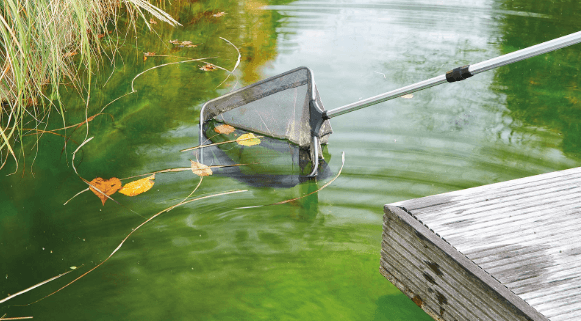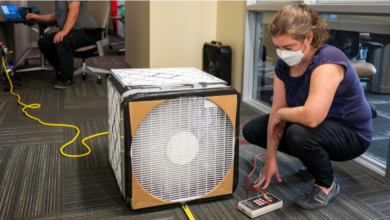How to Use Cleaner Pond Methods Effectively

I still recall the disappointment of peering into my newly built backyard pond, expecting a sparkling jewel, only to find it turning into a murky mess within weeks. Leaves piled up, algae bloomed like wildfire, and the fish seemed lethargic. We all dream of that tranquil water feature that draws us outside for quiet moments, but without the right care, it can become a chore. That’s where focusing on a cleaner pond changes everything—it’s not just about aesthetics; it’s about creating a thriving ecosystem for fish, plants, and wildlife. In this guide, we’ll share practical, human-tested strategies we’ve gathered from years of trial and error, plus insights from pond experts across the web. Whether you’re battling green water or sludge buildup, these steps will help you reclaim that crystal-clear haven without harsh chemicals or endless scrubbing.
Understanding Why Your Pond Loses Its Sparkle
Ponds are living systems, balancing biology, chemistry, and physics in a delicate dance. When that balance tips, problems arise fast. Excess nutrients from fish waste, decaying leaves, or runoff feed algae, turning water green and cloudy. Low oxygen levels suffocate beneficial bacteria, while poor circulation lets debris settle into sludge. We’ve seen it firsthand: a neglected pond can go from inviting to off-putting in a single season.
The Hidden Culprits Behind Murky Waters
Algae blooms top the list, thriving on phosphates and nitrates that spike in warm, sunny conditions. String algae clings to rocks like unwanted hair, while planktonic types make the whole pond look like pea soup. Then there’s sediment—fine particles from erosion or construction that cloud everything. Odors? That’s often anaerobic bacteria feasting on muck at the bottom, releasing foul gases. Identifying these early saves headaches; a quick water test kit reveals pH imbalances or high ammonia that signal trouble.
Diagnosing Common Pond Woes: Spot Them Early
No one likes surprises, especially when they involve scooping slime. We start every spring with a walkthrough, noting changes since fall. Cloudy water might mean clay suspension or overfeeding; brown tints often come from tannins in leaves. Green water screams nutrient overload, and foam? That’s proteins from fish or plants breaking down.
Quick Checks for a Healthier Diagnosis
- Visual Scan: Skim the surface for scum or strings; dive deeper with a clear tube to check mid-level clarity.
- Smell Test: Earthy odors are normal; rotten egg smells mean low oxygen.
- Fish Behavior: Gasping at the surface? Time to aerate.
Catching issues early means simpler fixes. In one of our ponds, spotting foam led to reducing fish food portions, clearing it up in days.
Natural Paths to a Cleaner Pond Haven
We prefer nature’s toolkit over store-bought quick fixes—it’s sustainable and kinder to the critters. Barley straw bales release compounds that inhibit algae as they decompose, a low-effort win we’ve used for years. Beneficial bacteria additives jumpstart the nitrogen cycle, breaking down waste into plant food. And plants? They’re superstars, with floating ones like water hyacinth sucking up excess nutrients.
Harnessing Plants and Straw for Effortless Clarity
Introduce oxygenators like anacharis to boost dissolved oxygen and outcompete algae. Marginal plants along edges shade the water, cooling it and curbing blooms. For a DIY boost, suspend a barley straw bundle in a net—replace every few months. We’ve transformed a 1,000-gallon pond from green haze to see-through in two weeks this way, no drains needed.
- Top Plant Picks:
- Water lilies: Shade providers that gobble nitrates.
- Hornwort: Submerged cleaner that filters as it grows.
- Pickerelweed: Edge dweller for nutrient uptake.
These aren’t just pretty; they create a self-regulating cleaner pond dynamic.
Mechanical Magic: Filtration and Aeration Essentials
Nothing beats good old engineering for reliability. A solid pump circulates the full volume hourly, preventing stagnation. Skimmers nab surface debris before it sinks, while biofilters host bacteria colonies that devour ammonia. UV clarifiers zap free-floating algae without chemicals, clumping it for easy removal.
Building Your Filtration Dream Team
Start with a waterfall filter for gravity-fed bio-action—our go-to for koi setups. Submersibles work for small ponds, but pair them with external boxes for heavy loads. Aeration? Diffusers bubble oxygen from the bottom, breaking up thermal layers and reducing muck. In a recent overhaul, adding a bottom diffuser to our 2,500-gallon pond cut odors and cleared sediment overnight.
| Pond Size (Gallons) | Ideal Pump Flow (GPH) | Filter Recommendation | Aeration Add-On |
| Under 500 | 250-500 | Submersible Combo | Small Diffuser |
| 500-2,000 | 1,000-3,000 | Skimmer + Bio Box | Mid-Size Bubbler |
| Over 2,000 | 3,000+ | External Multi-Chamber | High-Output Diffuser |
This setup keeps things running smoothly, tailored to your scale.
Hands-On Cleaning: Gentle Techniques That Work
Sometimes, you roll up sleeves for a refresh. Use a pond vacuum for sludge—gentle suction pulls gunk without disturbing roots. For string algae, twist it off rocks with a soft brush; avoid scraping liners. Quilt batting over intakes traps fine particles fast, a hack we swear by for quick clears.
Step-by-Step Refresh Without the Drama
- Prep: Unplug pumps; net floating debris.
- Vacuum: Work in sections, emptying into garden beds as fertilizer.
- Rinse Filters: Use pond water only to save bacteria—tap kills the good guys.
- Test and Treat: Check parameters; add bacteria booster post-clean.
We do this quarterly, turning a chore into therapy with some tunes playing.
Chemical Aids: When Nature Needs a Nudge
Harsh algaecides are last resort—they can crash your ecosystem. But targeted ones like hydrogen peroxide dilute algae safely in a pinch. Enzyme cleaners break down organics without residue, and phosphate binders lock away bloom fuel. Always dose per instructions; we’ve learned the hard way that overkill stresses fish.
Safe Chemical Allies for Stubborn Spots
Opt for barley extract liquids for fast green-water fixes or sludge reducers with enzymes. In hot summers, a UV unit plus occasional peroxide keeps things pristine without daily dosing.
Seasonal Shifts: Year-Round Strategies for Clarity
Ponds change with the calendar—fall leaves demand netting, winter ice needs heaters to prevent gas buildup. Spring? Heavy cleaning and bacteria seeding. Summer heat calls for extra shade and aeration.
Fall and Winter Prep for Spring Wins
- Net leaves early; rake edges weekly.
- Insulate pipes; run low-flow pumps.
- Mulch surrounds to cut runoff.
We’ve winterized dozens, and proactive steps mean effortless springs.
The Joy of a Cleaner Pond: Beyond the Basics
A well-kept pond isn’t just clean—it’s alive with dragonflies, frogs croaking at dusk, and fish schooling like jewels. It cuts water bills by recycling evaporation and boosts property vibes. We host more gatherings now, with guests lingering by the water’s edge.
Final Ripples: Sustain Your Cleaner Pond Journey
Looking back, our ponds taught us patience and the beauty of balance. A cleaner pond emerges from consistent, gentle care—blending nature’s wisdom with smart tools. We invite you to start small: test your water, add a plant, tweak the flow. Watch as murk fades to mirror-like calm. Your oasis awaits; dive in and let it shine.
Frequently Asked Questions on Cleaner Ponds
How often should I clean my pond for optimal clarity?
We aim for monthly skims and quarterly deep cleans, adjusting for debris load. Heavy fish stocking? Weekly filter rinses.
Can I use chemicals in a fish pond without harm?
Stick to targeted, fish-safe options like enzymes or peroxide—always underdose and monitor. Natural methods are our first choice.
What’s the quickest natural fix for green water?
Barley straw or floating plants like hyacinths act fast, often clearing in 7-10 days by starving algae.
Do I need a filter for a small, plant-filled pond?
For under 500 gallons with good plants, maybe not—but adding one prevents surprises during heat waves.
How do I prevent winter muck buildup?
Aerate continuously and net leaves; beneficial bacteria keep things digesting even in cold.




